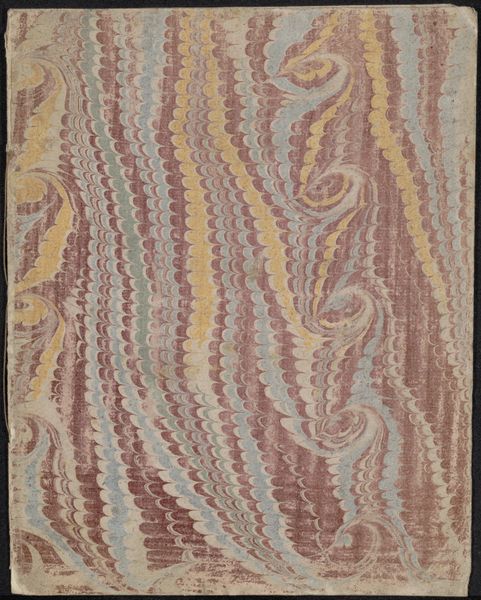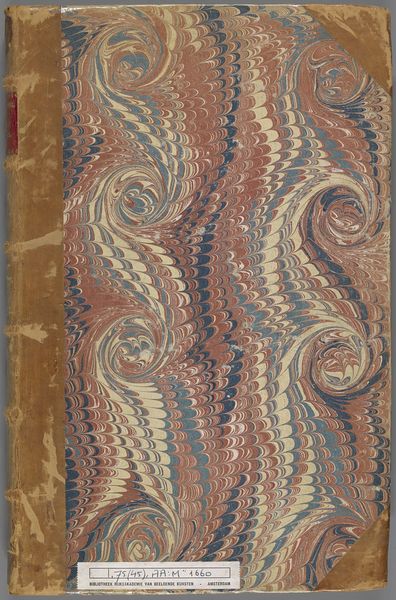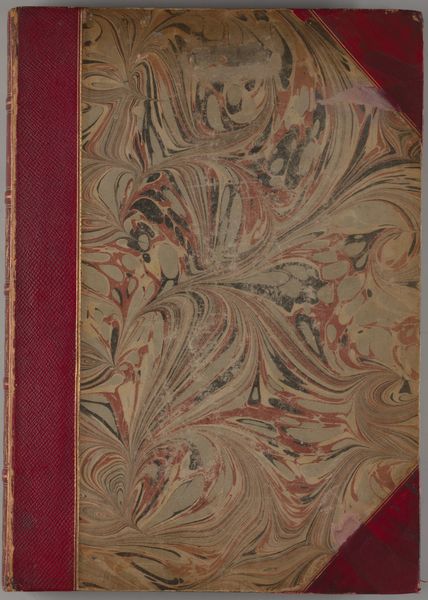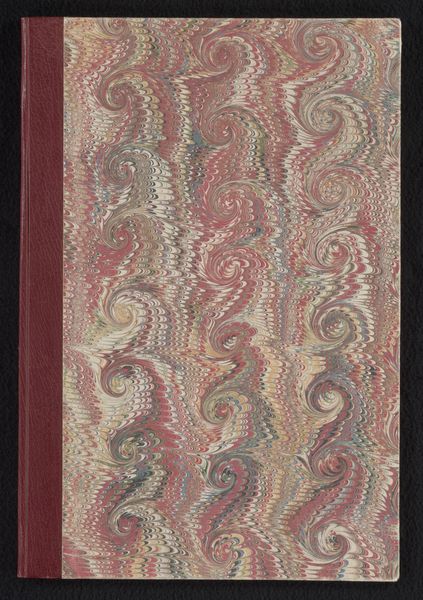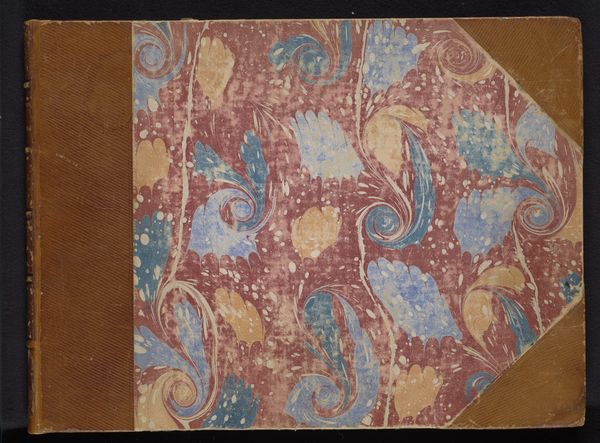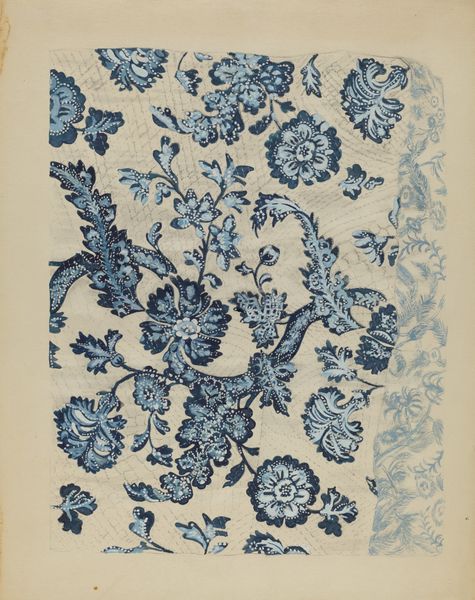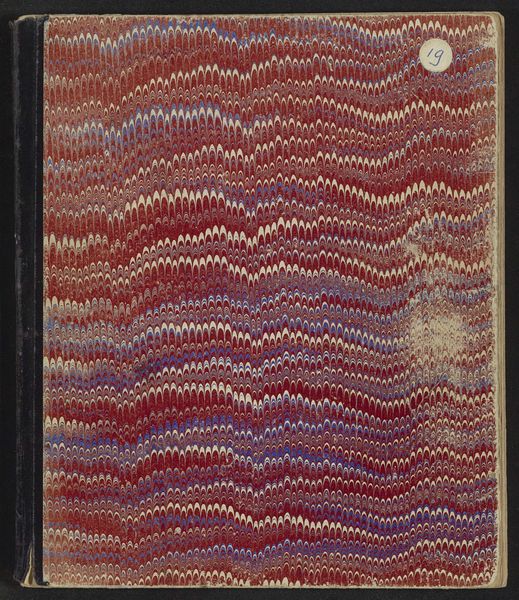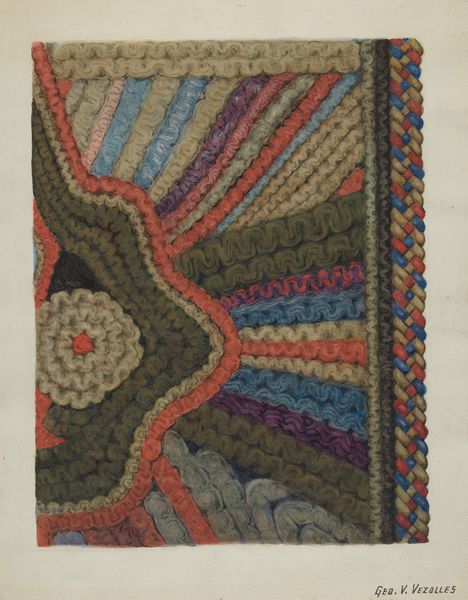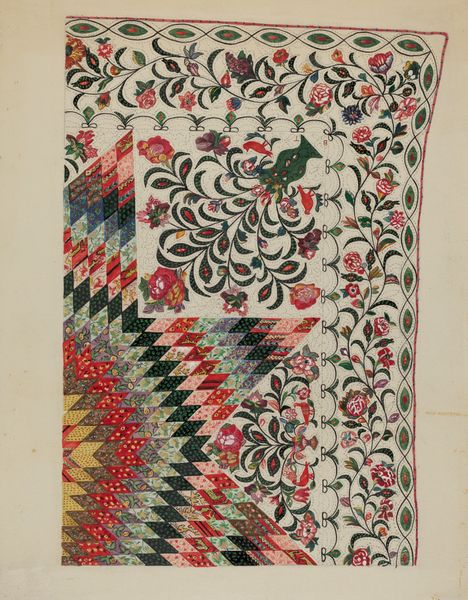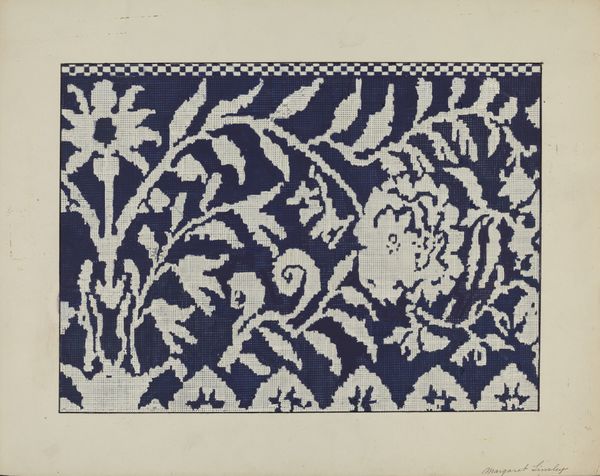
#
organic pattern
Copyright: Rijks Museum: Open Domain
Curator: Oh, wow! Just glancing at it, it feels almost hypnotic. Like gazing into a gently swirling pool, but in earthy tones. Editor: Indeed. What we have here is the cover for “Catalogus van schilderijen van Willem Lormier,” dating back to 1752. Curator: "Catalogus…" which translates to "catalog of paintings." So this beauty held within it records of paintings. Editor: Precisely. Note the superb example of decorative art on display here. A non-repeating marbled paper, crafted by floating pigments on a viscous surface before carefully laying the paper. This ensures that each book has a distinctive appearance. The formal effect creates organic lines that appear both ordered and random, contrasting horizontality with rotational motion at the center. Curator: The artist probably reveled in controlling chaos. The dance of predictability versus freedom of form feels very deliberate, and it gives a special, handcrafted feel, you know? Editor: Undeniably. Also, notice how the earthy reds and pale blues intersect with off-white negative space to highlight areas of visual complexity. The interaction adds incredible dynamism while subtly implying dimensionality on a primarily flat plane. It reminds me of an application of semiotics. Curator: Semiotics… meaning signs and symbols… I dig it. So what's it symbolizing? Is it just pretty, or does the swirly gigglyness try to represent bigger ideas? Editor: A good question, which scholars constantly tackle to try and derive symbolic implications. While impossible to identify an authorial intention with precision, a formalist position emphasizes seeing the marbling not as mimetic of something else but as existing beautifully as itself. Curator: Hmm... well, looking at it now, it’s like a soothing balm of patterns. Knowing the marbling would ensure the singularity of this book in 1752, one sees that each small, human decision gave unique character to a very handmade book. It’s special in a quiet, thoughtful way. Editor: In short, by isolating the marbling and analyzing how color and structural complexity interplay, one develops new and complex ways to perceive it. The artist compels one to embrace its simple ingenuity, as though each pattern had a voice. Curator: Thanks to your insights, I look at that patterned beauty and simply hear history giggling quietly. It whispers: "Remember me! This one-of-a-kind is from way, way back!” Editor: A worthwhile exercise in formal analysis, allowing art to resonate not just emotionally but intellectually too.
Comments
No comments
Be the first to comment and join the conversation on the ultimate creative platform.
